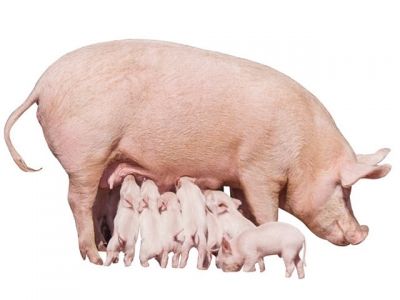Finnish team evaluating optimal sow feeding strategies, how to cut farrowing time

Following the release of their findings on some of the factors affecting sow colostrum yield and composition, an academic team is now concentrating on studying farrowing management, more precisely how to reduce farrowing duration, improve hormonal balance and neonatal survivability.
“Sow feeding strategies to improve sow body condition at farrowing will also [form part of our research objectives],” said Shah Hasan, a researcher located in the Department of Production Animal Medicine, the Faculty of Veterinary Medicine at the University of Helsinki, Finland.
Last week we reported on a study that he and his fellow researchers, animal scientists based in Finland and Estonia, undertook, whereby they investigated what influences colostrum output and its relation to piglet survivability, growth and mortality.
Today, he weighed in on the findings of that study, which was funded by the Finnish Ministry of Agriculture and Forestry, for us.
“The main conclusion of that study was [there is an] adverse effect from the longer farrowing duration of the hyper prolific sow, which arises from the larger litter sizes. Sows have a certain degree of inflammation at farrowing and if the farrowing goes on longer then it is probably worsening the situation.”
The team saw that both longer farrowing duration and inflammation (Hp level) had an adverse effect on sow colostrum yield.
“Sow body condition (back fat) is also important parameter to be considered,” said Hasan.
He said improvements to farrowing housing and use of nesting material could also have an impact on colostrum yield, but more research is needed on that aspect of production.
Other studies have shown that the onset of nest building, by providing abundant nesting materials and space, was accompanied by an increase in plasma oxytocin concentration in prepartum sows. Yun et al. (2014) confirmed that, for sows, in a non-crated system, a plentiful supply of nesting materials prior to parturition tended to increase piglet serum IgG and IgM concentrations during early lactation, wrote Hasan et al.
Fiber, amino acids, energy levels
Feed is critical when it comes to farrowing and lactating sows, said Hasan. The literature shows that adequate fiber, amino acids and energy levels are important at late gestation, he added.
“We saw the importance of fiber [in pregnant sows] some ten years from Claudio Oliviero's research work.”
Hasan also said recent work published by Peter Theil's team was a benchmark for sow nutrition research.
That Aarhus University, Denmark researcher showed that if sows are fed within the last three hours before farrowing, thus getting energy, they will repay with a shorter farrowing time and considerably fewer stillborn piglets.
Indeed, Theil and his team are currently collaborating with the industry on a four-year long project to disseminate and apply knowledge about this feeding strategy on commercial farms in Denmark.
“Some of our previous work also shows that different functional additives can improve sow farrowing by improving metabolism and gut health,” added Hasan.
Related news
Tools

Phối trộn thức ăn chăn nuôi

Pha dung dịch thủy canh

Định mức cho tôm ăn

Phối trộn phân bón NPK

Xác định tỷ lệ tôm sống

Chuyển đổi đơn vị phân bón

Xác định công suất sục khí

Chuyển đổi đơn vị tôm

Tính diện tích nhà kính

Tính thể tích ao



 Grease, copper additives may boost heat-stressed pigs' performance
Grease, copper additives may boost heat-stressed pigs' performance  What factors affect sow colostrum yield and composition?
What factors affect sow colostrum yield and composition?